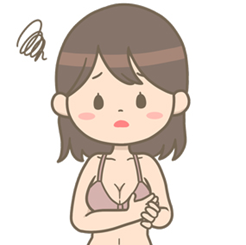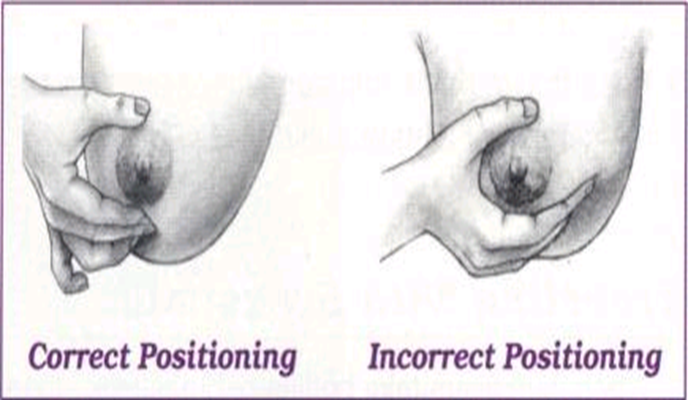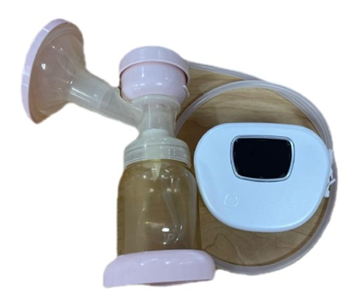[Learning Key Points]
- Learn what breast engorgement is and what causes it: Failure to start breastfeeding soon after delivery, baby sucking incorrectly, not sucking often enough, etc.
- Explain the mechanism of milk secretion: The more frequently the baby eats, the more milk is produced, etc.
- Learn how to prevent breast engorgement: Breastfeeding must be done as early as possible, fed correctly, fed when hungry, hand expression and electric milk expression, etc.
Ⅰ. What is breast engorgement?
During the first days after giving birth, when your milk supply increases significantly, you may feel your breasts become hot, heavy, and swollen, but the milk can still flow smoothly, which is called bloating, persistent breast engorgement can occur if the baby is not fed more during engorgement, the skin of the breasts will appear tighter, making the nipples flatter, sometimes redness and fever.


Ⅱ. What is breast engorgement caused by?
- Not starting breastfeeding soon after giving birth.
- Baby not latching well.
- You miss or skip feeding or pumping sessions. (at least 8-12 times a day).

Ⅲ. How breast milk is made?
The suckling action of an infant produces prolactin, which leads to milk production; more suckling leads to more prolactin, which in turn leads to more lactation. This is a positive feedback system as the product (milk) produces more suckling and more hormone.
When your baby suckles, it sends a message to your brain. The brain then signals the hormones, prolactin and oxytocin to be released. Prolactin causes the alveolus to begin making milk. Oxytocin causes muscles around the alveolus to squeeze milk out through the milk ducts.
Ⅳ. How can I prevent breast engorgement?
- Breastfeeding should be started as soon as possible after giving birth, to ensure the correct latch position and to meet the baby's natural needs for breastmilk all the time; the best way is to suck more frequently and not add formula.
- Hand milking
Hold the dark circle (areola), with your thumb above and index finger below, as a capital ‘C’, the other fingers support the breast. Push toward your chest wall gently; do not push too hard.
Compress with your thumb and index finger around the nipple and the back breast of areola; push and release repeatedly, avoid leaving your fingers’ leaving from the accurate position or pulling the skin, in the same way, push the two sides of the areola, and make sure that you have drained the milk from every part of the breast, compress at least for 3 to 5 minutes on one side until the milk flow slows down, and then compress the other, regular milking, 30 minutes each time, depending on the condition of your breast.
- Using the pump
As a rule, milk ducks need to be unobstructed for milk to be pumped out. While you are using the pump but the lump is still hard, you can turn off the pump, then give extra pushes around the lump, and continue milking with the pump. Use a pump alternatively on your breasts. When the milk flow slows down, you need to change to the other side. Stop the use of a pump when the milk flow becomes obviously less or when the breast becomes soft without any lump.
- Cold or warm compresses
Warm compresses: It can be used before breastfeeding, to soften the areola, and then the breast milk secretes easily. But you cannot use it for more than 5 minutes.
Cold compresses: It can be used after breastfeeding to reduce breast tenderness. You can use it for 2-3 hours, and every time for 20-30 minutes.
By the way, research has found that using raw green cabbage that can be chilled or at room temperature reduces breast swelling. Replaces it every two hours or when the leaves become soft.
Ⅴ. Conclusion
During breastfeeding, mothers always hope to give their babies the best quality food - breast milk, but sometimes due to poor skills, it will not only affect the willingness to continue breastfeeding, but also cause breast discomfort. These methods help mothers, prevent and relieve the problem of breast bloating, so that breastfeeding mothers can breastfeed more smoothly and help her baby grow healthily!
Ⅵ. References
Health Promotion Administration Ministry of Health and Welfare (2022). Breastfeeding Handbook. from https://www.hpa.gov.tw/Pages/EBook.aspx?nodeid=1586
簡易測驗
Let's take the quiz to make sure you understand
評語
統計結果不開放
請登入後才可以評分
未登入或權限不足!
- 位置
-
- 資料夾名稱
- English
- 上傳者
- 周家如
- 單位
- 中榮護理衛教
- 英文名稱
- Breast Engorgement Prevention & Treatment
- 分類
- 治療
- 科別
- 產科
- 癌症照護
- 否
- 建立
- 2024-01-29 11:21:00
- 制訂日期
- 2008-09-30
- 最近修訂
- 2024-03-19 11:52:00